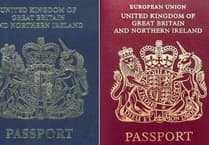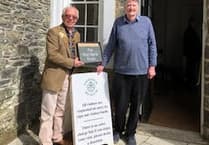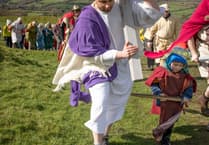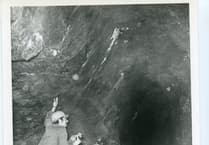THIS year marks the 475th anniversary of the Prayer Book Rebellion which brought national events – unrest over the introduction of the Book of Common Prayer by a protestant boy king – to the small village of Sampford Courtenay near Okehampton.
In June this year Sampford Courtenay will be holding a number of events to commemorate the anniversary. In this article, the second in a series, local informal historian John Griffiths gives some background of what led up to the start of the rebellion.
Whit Sunday, 9 June 1549 saw an outbreak of violence take place in Sampford Courtenay which rapidly grew into a full-scale rebellion. More than 10,000 Devonians and Cornishmen under arms laid siege to the city of Exeter before threatening to advance further east. The rebels hoped to persuade the King’s council to overturn legislation which otherwise would overthrow long-established and deeply-held beliefs and disrupt the rhythm of daily life.
Whitsun (or Pentecost) 1549 was the date set for reformer Cranmer’s new Book of Common Prayer to take effect. Out went the traditional Latin service to be replaced by one in English. Priests had to wear plain black instead of old richly-coloured vestments, whilst bells and candles were forbidden. It was declared that the Host at communion did not become the ‘Real Presence’ of Christ’s body and the very idea of purgatory was also abolished: no longer could the living help their dear departed through prayer or offerings.
Seismic changes to church services that were central to life were enough to provide the spark which lit the fire of rebellion. But this was also the culmination of a series of events which came after King Henry VIII separated from the Roman Church. From 1536 onwards, huge religious institutions - abbeys, priories and monasteries - were closed and sold off to greedy and ambitious, secular men. In 1538, the popular Henry Courtenay, Marquis of Exeter, was executed and his properties, including the manor of Sampford Courtenay, distributed to others. These changes would have affected life at every level. It didn’t help that a very poor harvest in 1548 had led to food poverty amongst the population.
The reforms couldn’t really have come at a worse time. Whitsun traditionally saw mass celebrations with games, dancing, and drunkenness fuelled by Church Ale made by the churchwardens for their parishioners. Resentment may already have been high as many traditional highlights of this time of year, including processions around the village led by banners and the pyx, had been outlawed in 1547. It only needed a small spark to ignite a major fire. The murder of an over-officious reformer on the steps of the Church House was enough to set the villagers on a path of rebellion.
This year’s commemorations get going with a guided coach tour of the battlefield sites on Sunday, April 14th.
Details of how to book for this event and all of the other prayer book rebellion events taking place are on the Sampford Courtenay website. www.sampfordcourtenay-pc.gov.uk/nope/802




